April 2024
As the morning mist hangs over the calm waters of Mallows Bay, a group of kayakers gently weaves their way through the remnants of sunken wooden shipwrecks that come alive with lush vegetation. Equipped with their phones, waterproof datasheets, and a guide to submerged aquatic vegetation, the kayakers pause to gather data on the glistening underwater grasses below them. Within the tranquil beauty of the sanctuary’s submerged treasures, they contribute valuable information to NOAA’s research and cultivate a connection with their local marine environment. This is the essence of community science—a world where anyone can be a scientist, and every contribution counts.
This year, Mallows Bay-Potomac River National Marine Sanctuary will host a BioBlitz on April 28th, 2024, and will launch their first-ever public submerged aquatic vegetation survey event on July 13, 2024. The data collected from these two events will contribute to the biodiversity records of Mallows Bay Park and adjacent sanctuary waters and help us understand the health of the sanctuary's overall ecosystem. Learn more about the different community science projects at Mallows Bay below.
What is Community Science?
Community science is a worldwide movement through which members of the public make observations, collect data, and help answer questions to solve real-world problems. It empowers people from all walks of life, regardless of age, background, or level of formal scientific training, to participate in scientific research. You might also hear it called “citizen science” or “participatory science.” Volunteer scientists can participate in a wide range of activities, from asking research questions and conducting experiments to gathering and analyzing data, interpreting findings, and even contributing to discoveries and solutions for complex problems.
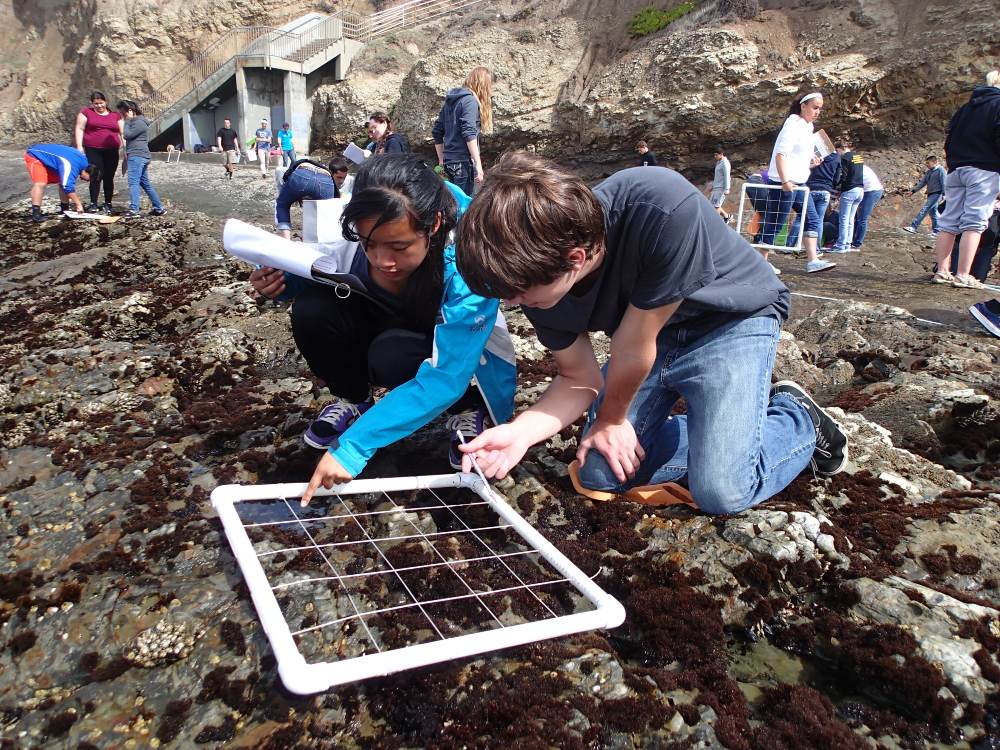
Involvement can range from monitoring water quality so people can stay informed about their local water conditions, to photographing plants you see on your daily walk for global biodiversity records. Whether you’re a birder, hiker, diver, or nature lover, it's easy to find opportunities that address local environmental issues or contribute to global trends, making participation accessible and impactful for all.
Why is Community Science important?
Community science allows us to gather vast amounts of data to monitor the health of our natural resources like never before. Resource managers may need to know what kind of marine debris is washing up on the shores of a sanctuary throughout the year in order to develop better solutions. Given limited personpower, NOAA staff may not be able to monitor these shores throughout the year on their own. However, hundreds of beach visitors can voluntarily submit real-time data on marine debris sightings to NOAA through a mobile app.
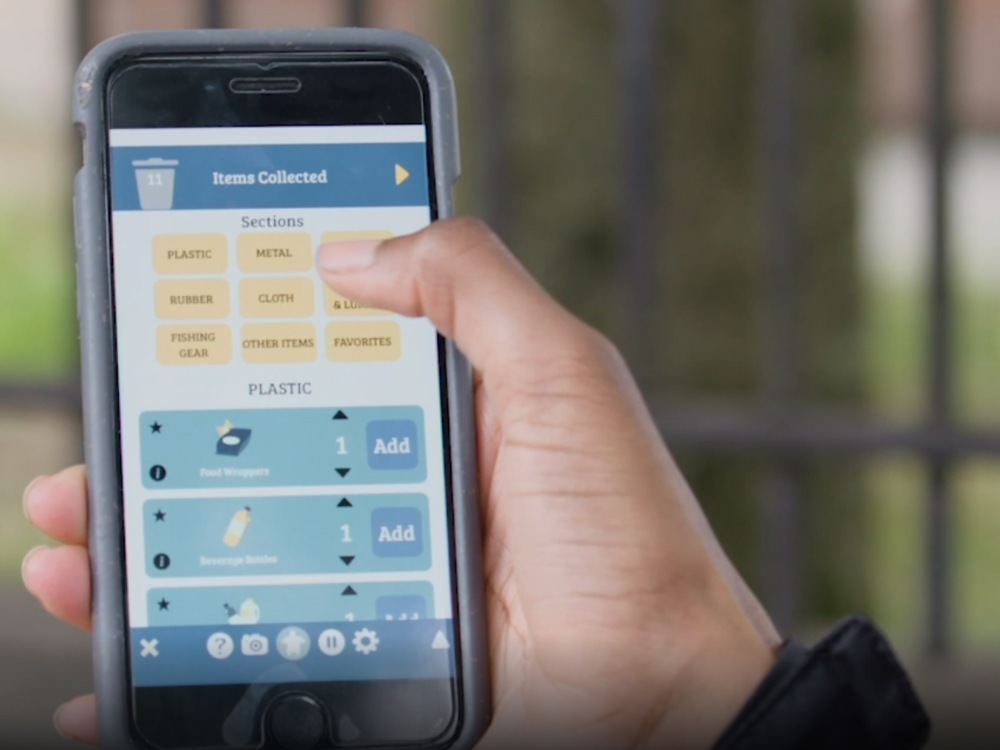
Community science also promotes public health. Participating in community science is fun, healthy, and a social activity that allows people to connect with their broader community. It facilitates opportunities for people to spend more time outdoors while encouraging them to actively explore their surroundings. Engaging with natural resources in this way helps to nurture curiosity and mindfulness about the natural world. This then cultivates a deeper appreciation for nature and can improve overall environmental stewardship.
Community Science at Mallows Bay-Potomac River National Marine Sanctuary
Mallows Bay-Potomac River National Marine Sanctuary seamlessly blends history, culture, and nature, providing something for everyone to enjoy! As the first marine sanctuary in a river and part of the Chesapeake Bay watershed, it boasts the largest collection of similarly built shipwrecks in the Western Hemisphere, famously known as the "Ghost Fleet" of the Potomac. These ships also support a thriving, biodiverse ecosystem. Recreational activities at Mallows Bay include birdwatching, fishing, paddling the waters, and hiking at Mallows Bay Park. Since its designation in 2019, the sanctuary, in collaboration with co-managers Charles County, Maryland Department of Natural Resources, and Maryland Historic Trust, has spearheaded community science initiatives, such as the BioBlitz event and submerged aquatic vegetation (SAV) surveys.
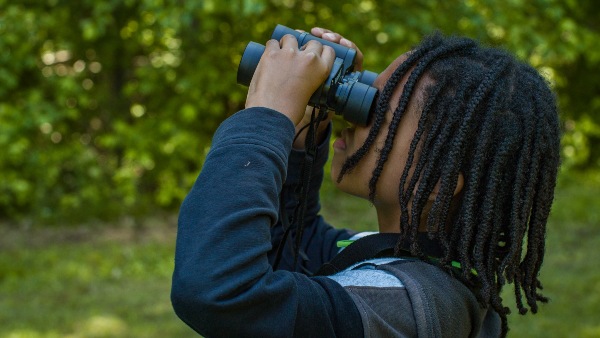
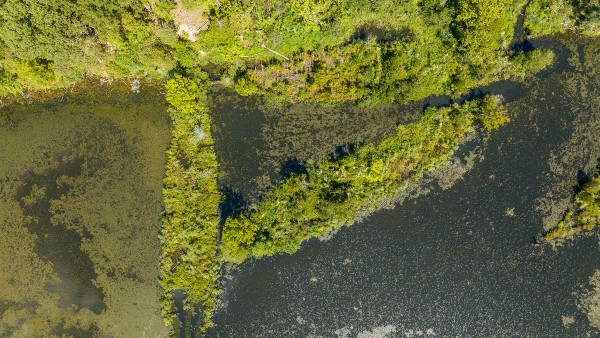
Bioblitz
A BioBlitz is a community science event that brings together volunteer scientists, families, naturalists, and other community members to find and record as many living species as possible in a designated area over a short period of time. The goal is to create a snapshot of the biodiversity found in a particular location.
Sanctuary BioBlitz events utilize the iNaturalist app, which allows users to create high-quality data by simply submitting a picture of the organisms they observe in nature. Naturalists and scientists from around the world help identify what's in users' photographs and develop research-grade data for science and conservation.
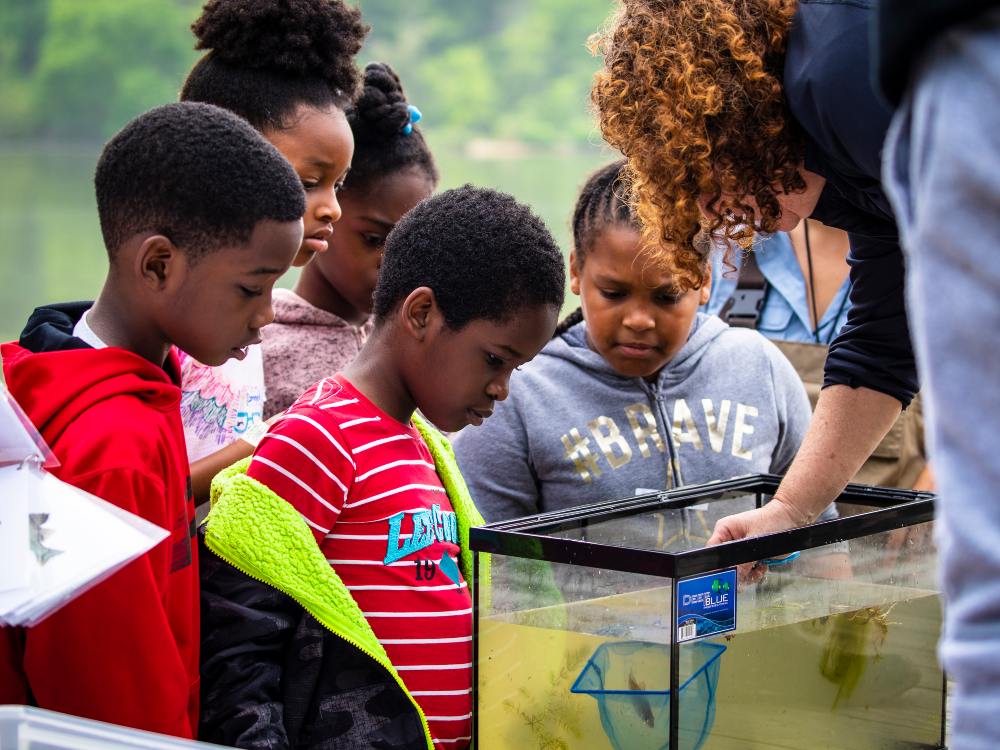
The sanctuary has hosted two BioBlitz events at Mallows Bay Park and has announced another one for April 28th, 2024 as part of the worldwide City Nature Challenge, an annual friendly competition among cities across the globe to record the most species in one weekend.
At Mallows Bay Park, which is part of the Washington D.C. City Nature Challenge team, participants are equipped with magnifying glasses, binoculars, and butterfly nets, and are encouraged to get excited about exploring their local park. Previous activities have included fishing, beach seining, birdwatching, guided hikes, and kayak tours.
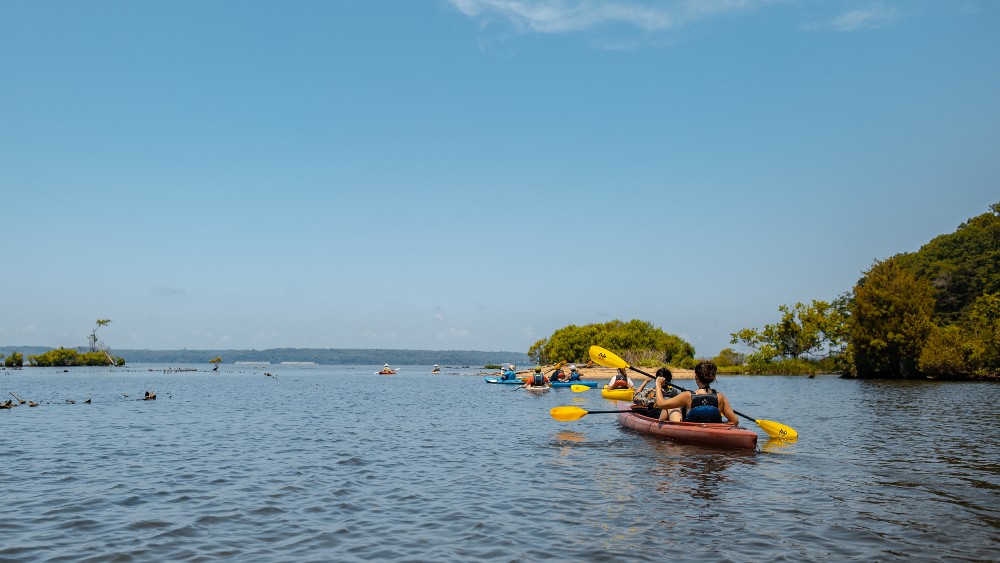
“These BioBlitz events have helped collect hundreds of species observations at Mallows Bay, helping us to better understand the biodiversity of the sanctuary, " says Research Specialist Megan McCabe. “We see this not only as a valuable data resource but also as an important opportunity to foster a strong sense of stewardship among the local community and show visitors all the sanctuary has to offer.”
Submerged Aquatic Vegetation Surveys
Healthy and dense underwater grasses, also called submerged aquatic vegetation (SAV), act as water purifiers and provide a safe haven, vital food source, and oxygen for blue crabs, young fish, and other ecologically critical Bay species. SAV is also an excellent indicator of water quality, responding sensitively to environmental shifts caused by pollution or climate change.
It's crucial to monitor the health of SAV to understand the health of the sanctuary's overall ecosystem. On July 13, 2024, the sanctuary will be hosting its first SAV Community Survey.
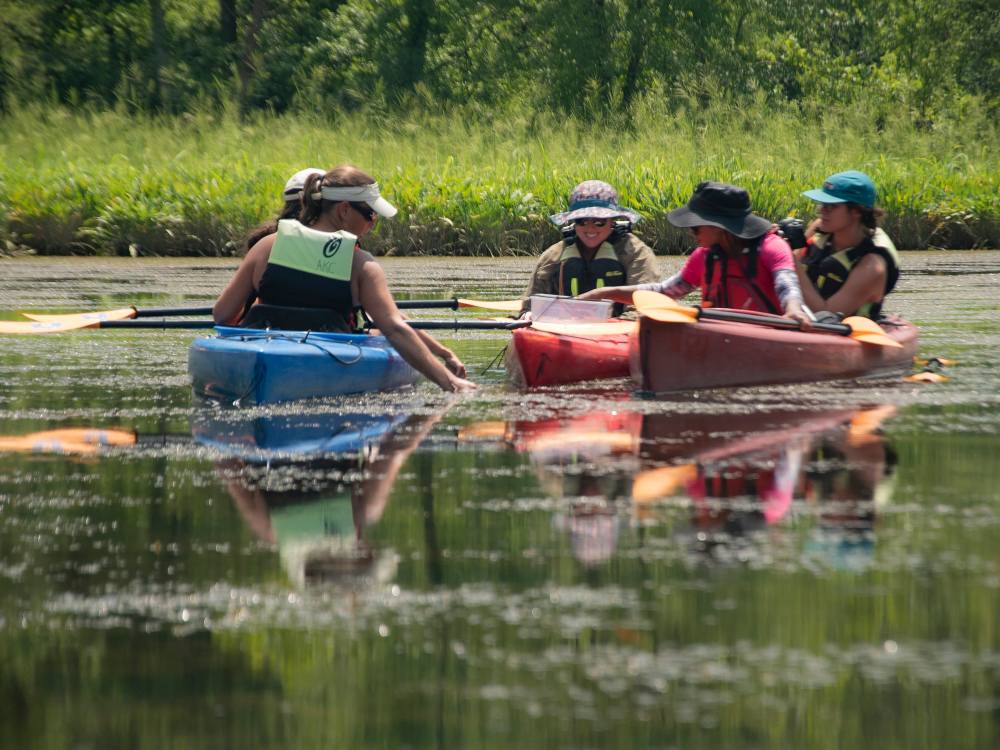
For the past two summers, the sanctuary has invited organizations like Force Blue to collaborate on SAV surveys, helping to establish an annual survey. At this special day-long event, volunteers will be trained to identify and count SAV, and after a provided lunch, will paddle into the sanctuary to collect data on SAV growth and abundance. This event will shine a light on the importance of SAV to the sanctuary and Chesapeake Bay while allowing participants to kayak through these vibrant underwater meadows.
The event will be facilitated by Chesapeake Bay SAV Watchers, which is a program that provides volunteer scientists with opportunities to learn about SAV and generate useful data for bay scientists and managers.
Water Quality Monitoring
Mallows Bay-Potomac River National Marine Sanctuary is part of a much larger watershed that is looked after by many other organizations and stewards. The Potomac Riverkeeper Network, in collaboration with the National Marine Sanctuary Foundation, is monitoring bacteria levels at Mallows Bay. It's important for anyone coming in contact with the water to be aware of bacterial levels and potential health risks.
This effort is part of the Potomac Riverkeeper’s Community Science Water Quality Monitoring volunteer program and their goal of a swimmable Potomac River. Dedicated volunteers collect, analyze, and share water quality data weekly on the Swim Guide app and social media platforms. This information helps the public understand when and where it's safe to interact with the river and contributes to a broader dataset covering over 7,000 beaches and waterways.
This work also supplements the existing body of weather and water data provided by the Mallows Bay water quality buoy, supporting scientific research, education, as well as recreational and commercial activities.
Community Science and National Marine Sanctuaries
From recording SAV at Mallows Bay to counting humpback whales off the shores of Hawai‘i, community science embodies two fundamental values of the National Marine Sanctuary System: community and conservation.
Marine sanctuaries are significant sites for monitoring and researching our ocean ecosystems and resources. This research provides valuable insights into understanding how they're changing and the best ways to conserve and restore them. Without the dedicated support of the local sanctuary communities, much of this research and restoration would not be possible. In 2023 alone, 4,753 volunteers participated in 36,030 hours of national marine sanctuary community science efforts!
Volunteers, community scientists, and partners are the crucial link to the local communities and the next generation of informed ocean stewards. Communities living among and around our most extraordinary underwater ecosystems possess valuable knowledge and serve as stewards for these special ocean and Great Lakes places.
Learn more about community science initiatives across the National Marine Sanctuary System by exploring the Office National Marine Sanctuaries Citizen Science page.
Follow our Mallows Bay-Potomac River National Marine Sanctuary Instagram and Facebook to stay up to date about what’s happening in the sanctuary.
Dana Sanchez is a Chesapeake Conservation and Climate Corps member at Mallows Bay-Potomac River National Marine Sanctuary
Rachel Plunkett is the content manager and senior writer at NOAA’s Office of National Marine Sanctuaries

